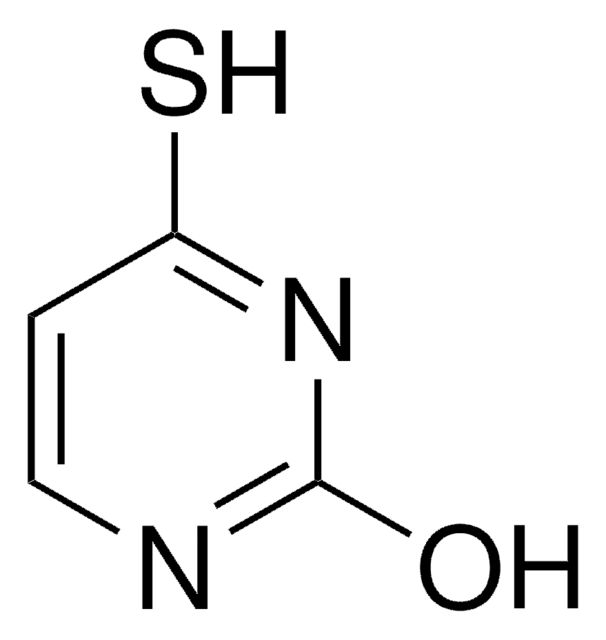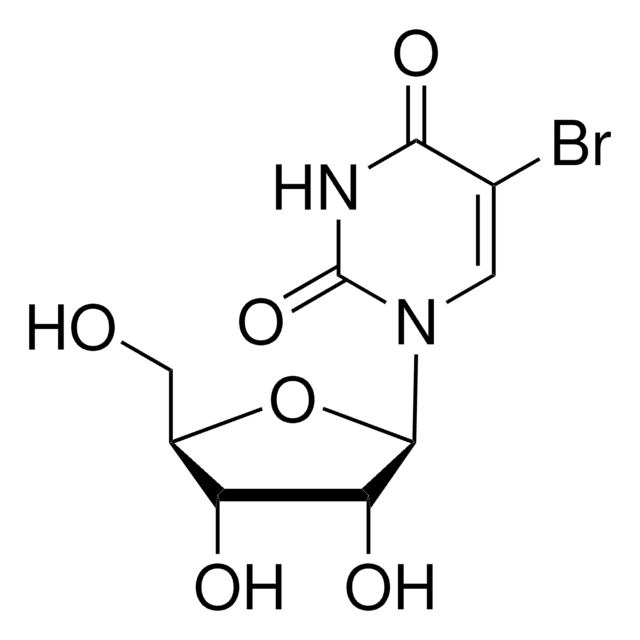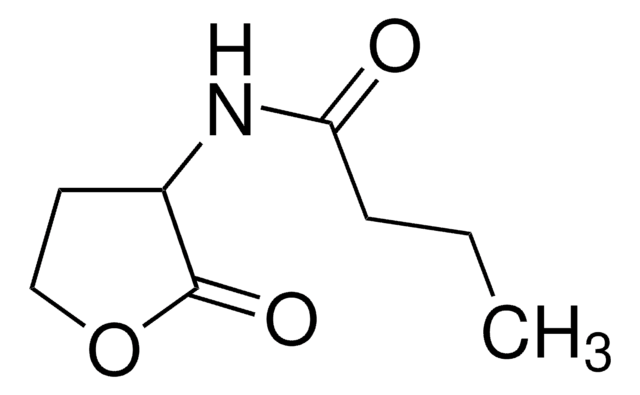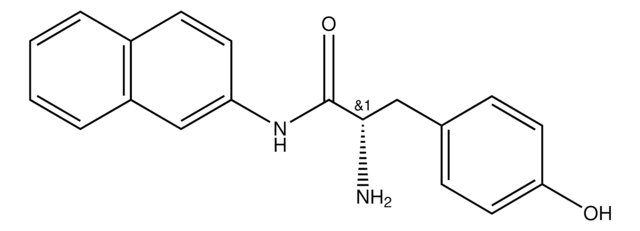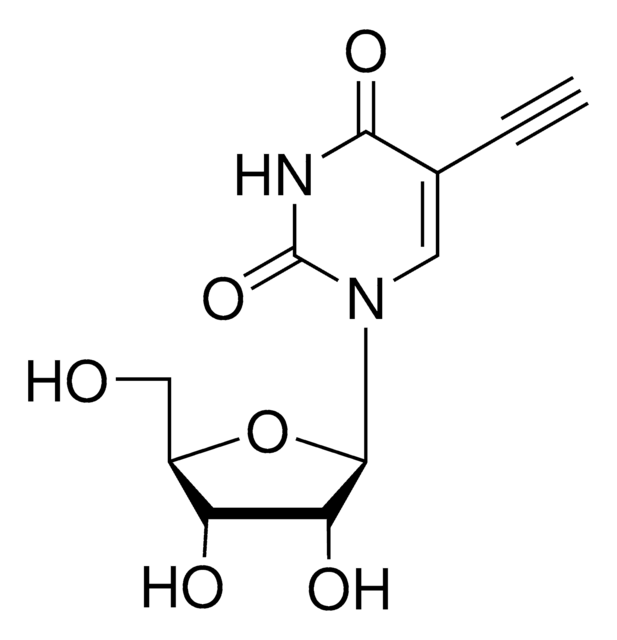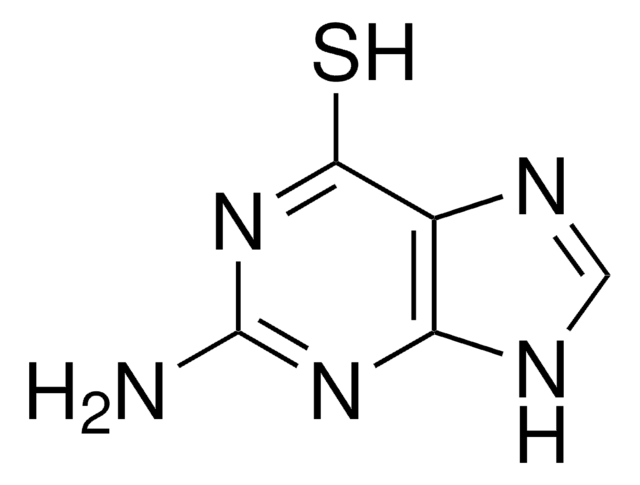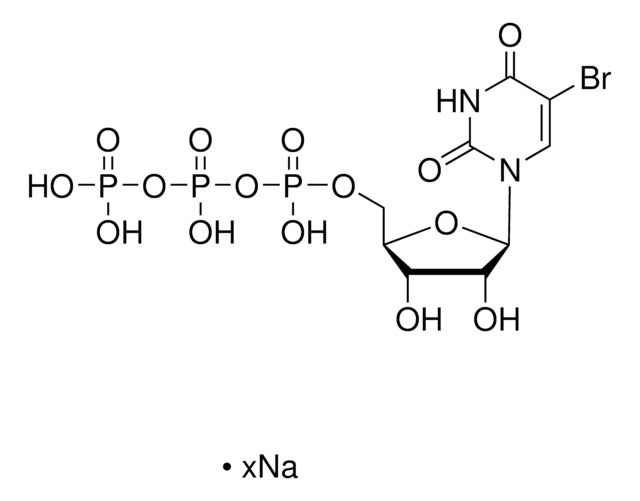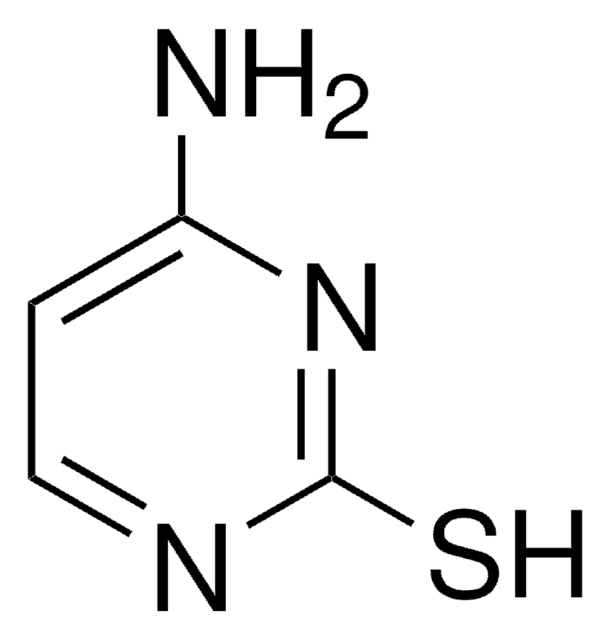T4509
4-Thiouridine
≥98%
Synonym(s):
4sU, RNA synthesis inhibitor, Thiouridine
Sign Into View Organizational & Contract Pricing
All Photos(4)
About This Item
Empirical Formula (Hill Notation):
C9H12N2O5S
CAS Number:
Molecular Weight:
260.27
EC Number:
MDL number:
UNSPSC Code:
41106305
PubChem Substance ID:
NACRES:
NA.51
Recommended Products
biological source
synthetic (organic)
Assay
≥98%
form
powder
solubility
water: 20 mg/mL, clear
storage temp.
−20°C
SMILES string
OC[C@H]1O[C@H]([C@H](O)[C@@H]1O)N2C=CC(=S)NC2=O
InChI
1S/C9H12N2O5S/c12-3-4-6(13)7(14)8(16-4)11-2-1-5(17)10-9(11)15/h1-2,4,6-8,12-14H,3H2,(H,10,15,17)/t4-,6-,7-,8-/m1/s1
InChI key
ZLOIGESWDJYCTF-XVFCMESISA-N
Looking for similar products? Visit Product Comparison Guide
General description
4-Thiouridine is a photoreactive uridine analog.
Application
4-Thiouridine has been used in labeling and isolation of nascent RNAs.
Biochem/physiol Actions
4-Thiouridine plays a role in assessing nascent RNA synthesis. It also enhances site-specific crosslinking. 4-Thiouridine also acts as a photoaffinity probe due to its stability even while lacking specific photoactivation. It can also be incorporated into RNAs.
Storage Class Code
11 - Combustible Solids
WGK
WGK 3
Flash Point(F)
Not applicable
Flash Point(C)
Not applicable
Personal Protective Equipment
dust mask type N95 (US), Eyeshields, Gloves
Choose from one of the most recent versions:
Already Own This Product?
Find documentation for the products that you have recently purchased in the Document Library.
Customers Also Viewed
Indira Memet et al.
Nucleic acids research, 45(9), 5359-5374 (2017-01-25)
In eukaryotes, the synthesis of ribosomal subunits, which involves the maturation of the ribosomal (r)RNAs and assembly of ribosomal proteins, requires the co-ordinated action of a plethora of ribosome biogenesis factors. Many of these cofactors remain to be characterized in
Tsutomu Suzuki et al.
Annual review of genetics, 45, 299-329 (2011-09-14)
Mitochondria are eukaryotic organelles that generate most of the energy in the cell by oxidative phosphorylation (OXPHOS). Each mitochondrion contains multiple copies of a closed circular double-stranded DNA genome (mtDNA). Human (mammalian) mtDNA encodes 13 essential subunits of the inner
Ruijia Wang et al.
Cell reports, 26(10), 2766-2778 (2019-03-07)
Regulation of cleavage and polyadenylation (CPA) affects gene expression and polyadenylation site (PAS) choice. Here, we report that the CPA and termination factor PCF11 modulates gene expression on the basis of gene size. Although downregulation of PCF11 leads to inhibition
Lukas Windhager et al.
Genome research, 22(10), 2031-2042 (2012-04-28)
RNA synthesis and decay rates determine the steady-state levels of cellular RNAs. Metabolic tagging of newly transcribed RNA by 4-thiouridine (4sU) can reveal the relative contributions of RNA synthesis and decay rates. The kinetics of RNA processing, however, had so
Saskia Gressel et al.
Nature communications, 10(1), 3603-3603 (2019-08-11)
Eukaryotic gene transcription is often controlled at the level of RNA polymerase II (Pol II) pausing in the promoter-proximal region. Pausing Pol II limits the frequency of transcription initiation ('pause-initiation limit'), predicting that the pause duration must be decreased for
Our team of scientists has experience in all areas of research including Life Science, Material Science, Chemical Synthesis, Chromatography, Analytical and many others.
Contact Technical Service